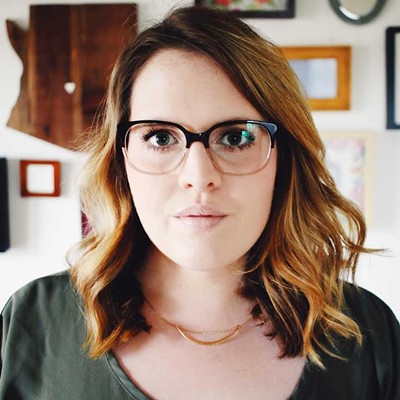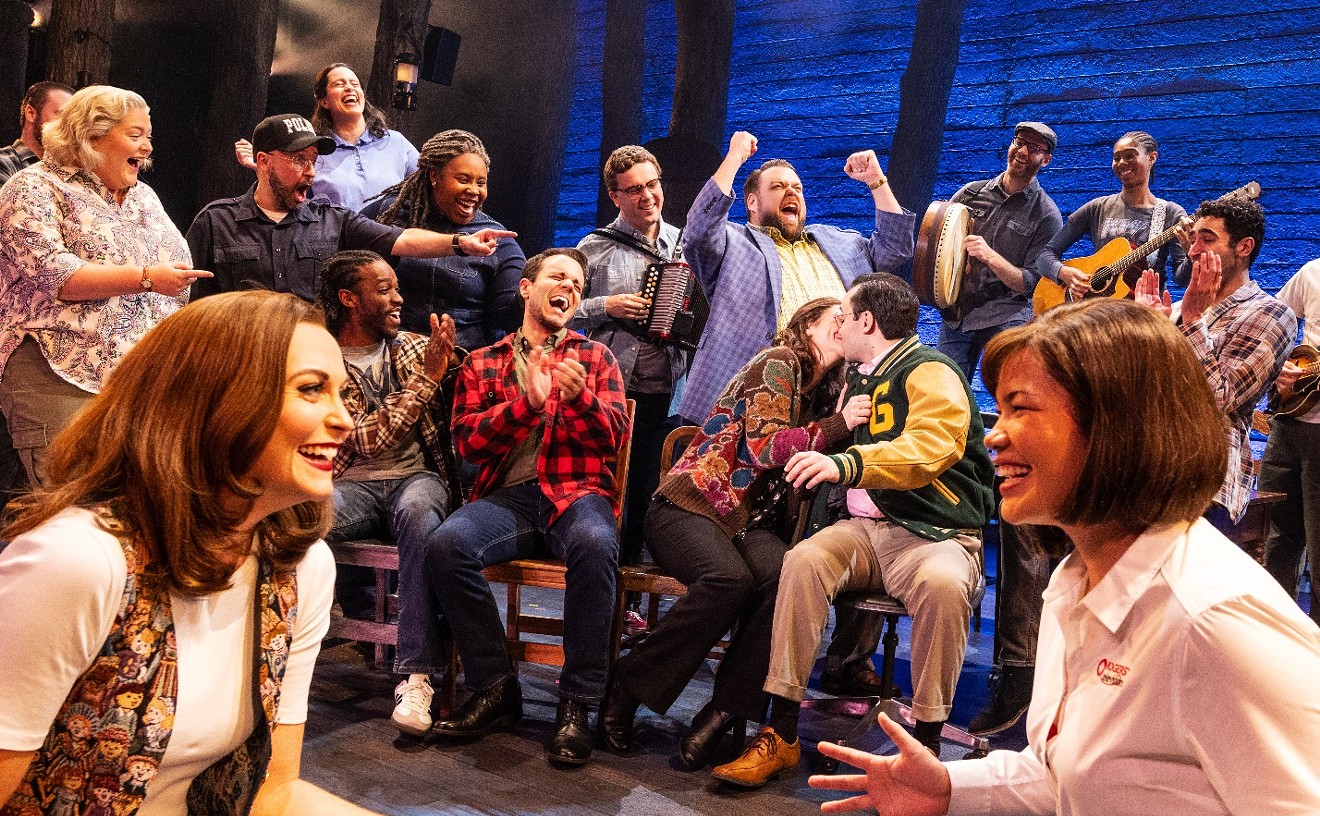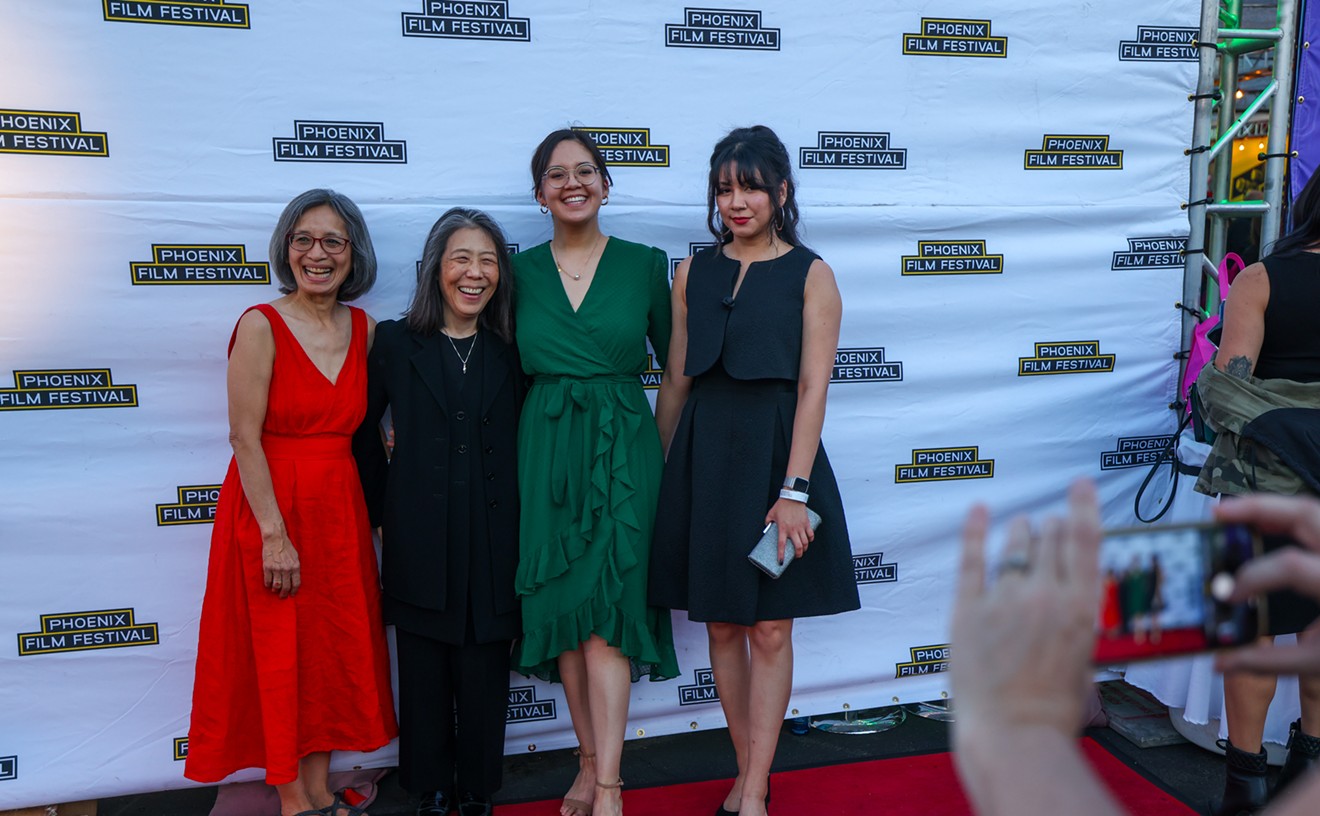Maybe Phoenix doesn't have that one skyscraper that rises above the rest like the Empire State Building and, sure, stucco abounds, but there are plenty of gems by big-name architects who found inspiration in the desert.
These archetypal homes around the Valley, either built by our most notable architects or familiar to even the newest Phoenician, help make this city what it is. We've rounded up ten of these iconic homes, from mansions to ruins, that are oh so Phoenix.
Taliesin West
When people think of Arizona architects, there's one name that usually comes to mind before any other: Frank Lloyd Wright. And out of all Wright's masterful pieces of architecture, Taliesin West is both iconically Wright and iconically Phoenix. Located in the McDowell Mountains just outside of Scottsdale, Taliesin West sits right at the earth's surface, half below and half above, blending seamlessly into the surrounding desert landscape. What once was Wright's winter home now houses the the Frank Lloyd Wright Foundation and Taliesin, The Frank Lloyd Wright School of Architecture. If you want to visit Taliesin West, tours are available Thursday through Monday during the summer but seven days a week during the rest of the year. For more information, visit franklloydwright.org.
L. Ron Hubbard House
We don't think many will disagree if we say Scientology is. . . interesting. Whether you're fully devoted to the controversial belief system or think it's a bunch of poppy-cock, it might pique your curiosity to know that the philosophical religion started in a house located in the Valley at the base of Camelback Mountain. Scientologists say it was in this home that L. Ron Hubbard, the founder of Scientology, researched and discovered the human soul and scribed the first books of the religion. The L. Ron Hubbard house is not open for public tours, but more information can be found at lronhubbard.org.
Tovrea Castle
If you showed a photo of Tovrea Castle to any Phoenician, they would recognize it. But we would bet a majority of those people wouldn't know what the wedding-cake shaped building is or even what it's called. Well, take note, people. Tovrea Castle at Carraro Heights was originally meant to be the centerpiece of a resort built by Italian-born Alessio Carraro. However, the resort was never completed, and all that remained was the castle-like structure. In 1931, meat-packing mogul Edward Ambrose (“E.A.”) Tovrea bought the property from Carraro but died a year later, leaving his wife to live in the residence by herself. The City of Phoenix purchased Tovrea Castle in 1993. People can tour this historic landmark now, but the tours must be booked in advance. See tovreacastletours.com for more info.
Case Study Apartments #1
Al Beadle's Case Study Apartments #1 are the only apartments from the architectural experiment by Arts & Architecture magazine between 1945 and 1966 that were built outside of Los Angeles. The Case Study Houses were meant to act as inexpensive and efficient model homes for the residential housing boom following World War II. These central Phoenix apartments exemplify Beadle's clean, minimalist style, and the signature wooden boardwalk running down the length of the complex speaks to Beadle's mixture of the hard, manmade materials and softer, natural ones. The apartments are still used as active residential units. See the Case Study Apartments #1 Facebook page for more information.
McCune Mansion
The McCune Mansion, also known as the Hormel Mansion, is huge. We mean really huge, like 13th-largest-privately-owned-home-in-the-entire-nation huge. This gargantuan, 52,000-square-foot home was built in the 1960s for Pennzoil heir Walker McCune and later purchased by Hormel Foods heir George "Geordie" Hormel. The house holds 14 bedrooms, 30 bathrooms, and five kitchens. Sometimes you just can't walk across the length of your massive home to get a snack, we guess. It also boasts such standard home features as an Olympic-sized swimming pool, an ice skating rink, and a 150-seat theater. You know, just the bare minimums for a ridiculously luxurious home. The mansion was listed for sale in 2013 for about $10 million dollars.
Jarson Residence
As you're driving through the eastern residential neighborhoods tucked away in the Phoenix Mountains, you're sure to see a multitude of beautiful homes. But turn a corner and a stunning steel and copper structure will catch your eye. Will Bruder designed this mountainside estate for Scott and Debbie Jarson of Jarson & Jarson Real Estate and their family in 2006. The half sub-level home is reminiscent of Taliesin West. But Bruder's design is decidedly more modern than Frank Lloyd Wright's, particularly in the materials used. Glass and metal are the street-view aesthetic, while cork and concrete floors and stainless steel reside within. More information can be found at willbruderarchitects.com/portfolio/jarson-residence.
Wrigley Mansion
For those of us who grew up in Phoenix, the Wrigley Mansion is almost like a myth. Located at the top of a hill in one of the wealthiest parts of the city, it seemed closer to the mansion in Richie Rich than an actual place that people frequented. Little did we know that the residence was built for William Wrigley, Jr. Yes, chewing gum Wrigley. His "Winter Cottage" is over 16,000 square feet with 24 rooms and 12 bathrooms. This residence is the smallest of all the properties that Wrigley owned during his time. Today, the mansion operates as a club and can be rented out for events and weddings. You can also dine in the newly rehauled Geordie's Steak inside the mansion if you just want to spend a couple hours there. For more information, see www.wrigleymansion.com.
DeConcini House
Tucked away behind large trees and beautifully crafted gates lies an architectural masterpiece in the middle of the city. Paolo Soleri only designed two residential homes during his career. The first one was named the Dome House and is located in Cave Creek. The other was commissioned by Dino DeConcini, brother of Arizona Senator Dennis DeConcini, to be built in central Phoenix near the Biltmore area. The team who helped Soleri build the house was simultaneously building part of Arcosanti, so the similarities in design — round windows, domed ceilings — should come as no surprise. In 2010, the home sold for about $1.39 million. For more information, visit arcosanti.org.
Mystery Castle
It's not often anymore that you see true gestures of grandeur for love, and it's even less often when that love is from a father to his daughter. Now mostly a tourist attraction, Mystery Castle at South Mountain is the result of one of those gestures. The story goes that Boyce Gully's daughter, Mary Lou, used to cry on the beaches of Seattle as the waves washed away the small sand castles she would build, so Gully decided to build his daughter a castle that wouldn't wash away. Using mostly native materials, Gully erected an 18-room castle for Mary Lou. Gully died before he could see his family move in, and Mary Lou wasn't able to move into the home until she was an adult. But she honored her father's work by offering tours of her home until she died in 2010. Tours are still available from October through May. Get all the details at www.mymysterycastle.com.
Rosson House
Looking at the Rosson House at Heritage Square in downtown Phoenix is like looking back in time. Built in the 1800s, this house was part of the original foundation of Phoenix. Dr. Roland Rosson, who served as the city's mayor for a time in the 1890s, lived there with his wife Flora and their seven children. The Victorian architecture of the home looks like almost nothing else in the surrounding area. The building was the last one designed by San Francisco architect A.P. Petit, who died the month the building was completed. Tours are given regularly, but check heritagesquarephx.org/visit/the-rosson-house for details.
Editor's note: This post has been updated from its original version with photo of the Jarson residence.
Follow Jackalope Ranch on Facebook, Twitter and Pinterest.
[
{
"name": "Air - MediumRectangle - Inline Content - Mobile Display Size",
"component": "18478561",
"insertPoint": "2",
"requiredCountToDisplay": "2"
},{
"name": "Editor Picks",
"component": "16759093",
"insertPoint": "4",
"requiredCountToDisplay": "1"
},{
"name": "Inline Links",
"component": "17980324",
"insertPoint": "8th",
"startingPoint": 8,
"requiredCountToDisplay": "7",
"maxInsertions": 25
},{
"name": "Air - MediumRectangle - Combo - Inline Content",
"component": "16759092",
"insertPoint": "8th",
"startingPoint": 8,
"requiredCountToDisplay": "7",
"maxInsertions": 25
},{
"name": "Inline Links",
"component": "17980324",
"insertPoint": "8th",
"startingPoint": 12,
"requiredCountToDisplay": "11",
"maxInsertions": 24
},{
"name": "Air - Leaderboard Tower - Combo - Inline Content",
"component": "16759094",
"insertPoint": "8th",
"startingPoint": 12,
"requiredCountToDisplay": "11",
"maxInsertions": 24
}
]











